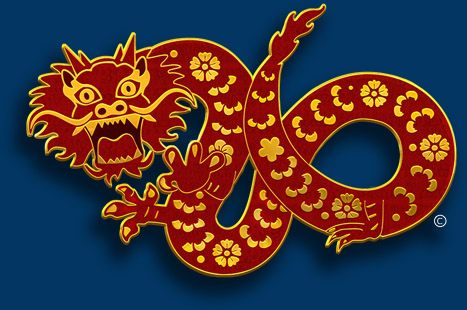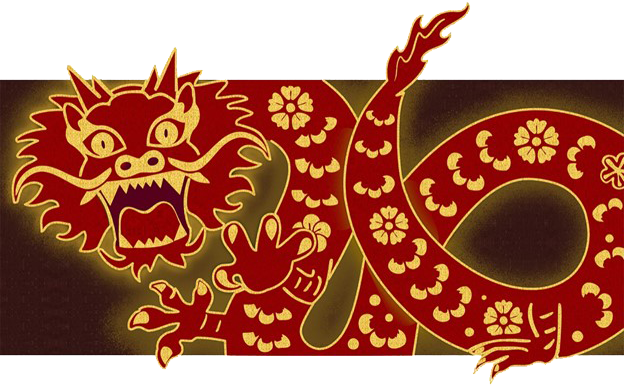THE ZEN MIRROR
Logic and Freedom: A Fresh Look at Classical Zen
By Jeff Brooks
Most of us martial artists encounter Zen somewhere along the way. Someone will advocate meditating before breaking bricks or before a match. Some will say it's worth it. Some will tell you they understand it completely, some will say it makes no sense.
My teacher who most inspired me as I began training was Shoshin Nagamine. A devoted Zen practitioner and also the Chief of Police for the prefecture of Okinawa, Japan, Nagamine Sensei offered Zen meditation daily in his dojo.
My own experience includes face to face study with some of the most notable Zen teachers in the world, and ordination as well. I also did a seven year program of scholastic study of the classical Indian Buddhist foundations of Zen. I have found that my work in law enforcement orients me to the practical and presents the urgent matter of life and death every day.
I hope that you will take this perspective seriously and use it well. It is likely to be very different from what you have heard before. So let me give you the inside story, without trying to sell you anything, without trying to get you to join anything, without trying to get you to think like me.
Here is the fact:
There is no reason to believe that if you sit still a lot all your troubles will be cancelled. Buddhism doesn't say so. There is no reason to believe that if you try to put all of your thoughts aside that something wonderful will happen.
In many Zen centers and the places under their influence this ignorance is dogma and lucid analysis is ridiculed. The promoters of this kind of nonsense will tell you that they are practicing "a tradition beyond words" and that "the map is not the journey" and your limited ideas won't help you put an end to suffering.
But at the summit of Indian Buddhist philosophy, the culmination of a 1500 year process of insight into the words of the Buddha and the nature of reality (specifically the Yogachara and the Madhyamika Prasangika, two great streams of thought which run together and which nourished the tradition that became Zen and Ch'an and Dzogchen) what we find points toward experience beyond words. This tradition uses lucid analysis, which respects the practitioner and employs the tools of language and cognition to reveal the limits of language and cognition and to move beyond them.
Practitioners in these traditions and other closely related lines of Buddhist teaching understood the need for deep stillness in order to permit the arising of the exquisite subtlety of perception required to observe the mind in action. They weren't just sitting there – being still, stopping thoughts, reducing stress or picturing water.
In modern Zen centers teachers talk about the uselessness of thought. But you don't have to be a "Zen master" or even a Zen master to know the map is not the journey. Any AAA member or GPS owner can tell you that. And when these Zen masters are marketing their centers, buying buildings, applying for grants, or designing a fee structure, they seem not to question the efficacy of the linear discursive thought they deride in daily dharma talks.
They counter this observation by pointing out the fact that thought is necessary in the relative world but in the realm of the absolute, the true world, it is false and useless. They claim that the relative world – the Zen center, the members, the contributions, etc. – constitute a skillful means to further the teaching.
Yet every day, five times a day in many of these centers, they chant that samsara is nirvana, that form is emptiness and emptiness is form. That the relative is not hiding some absolute behind it but that in fact this relative world we experience as regular people is a pramana, a valid perception, and it is a valid perception that is our karma and the absolute and a co-dependent arising that is a perfect mirror of our mind, the mind of the Buddha.
Not a separate realm. Not another world. Not some glow or potentiality waiting out there somewhere to be discovered or a little Buddha inside us obscured by ignorance, but what is right here before our eyes, right now.
They chant, with the words of the Heart Sutra and the other Prajna Paramita sutras, the same words we find in the Madhyamika Karika, the same words we will read in Nagarjuna's Wisdom, that reality does not hide, that there is one truth, as convenient as it may be from time to time, for us ordinary people to seek refuge in the conventions of the market.
If we can use logic and insight in our mind stream to buy property, build a building, recruit followers, accumulate donations and so on, then why can we not use logic to help ourselves to see how the mind functions, how language works to shift perception, to understand how seeing the suffering of endless beings can break your heart, and how this heartbreaking love becomes an irresistible motivation to get the tools we need to help take care of them and save them.
A pious pose, the right outfit, haircut, lofty affect, willful obscurity and meticulous ceremony won't help. There is no way to just sit still and expect something good will happen as a result. It is possible to sit and stay confused. Sit and dull your mind. Sit and deepen the distortions and prejudices you first sat down with. Sit and let your life pass.
To have a real teacher you can rely on as a guide is something of inestimable value. To join a club and hope for the best may not help.
Some koans which may once have been lucid arguments are now badly translated and incomprehensible. Once, expressed within their own cultural context, they may have been familiar ideas seen in a fresh perspective. They may have been quotes from scriptures which, it was assumed, the student had thoroughly studied, suddenly revealed to have a depth and dimension that had been invisible before. When the Diamond Sutra master featured in the Platform Sutra suddenly abandons his books for the purity of the direct perception of reality beyond words his insight is utterly predicated upon his Buddhist scholastic education. That intellectual foundation was not sufficient for liberation. But it was necessary.
Some koans may seem impenetrable, or designed to defeat apprehension by logic, to send the practitioner on a leap beyond the rational – but a leap into what? Some have leapt into cutesy, pat answers, or drama, or pantomime or some other make believe piece of theatre that is intended to convey something that will stand for insight beyond words. And have passed their koans, receiving the teacher's approval of their insight.
This anti-intellectual prejudice had great appeal to the sixties hippies who first attached themselves to the Japanese priests who taught in California at the beginning of the American Zen movement. Their ambitious followers quickly made plans and moved forward. They were confident and persuasive.
The appeal of their approach extends to people now who are suffering from overstimulation, the shallowness of pop culture, and the feelings of boredom, agitation, anxiety and depression which are the natural states of the modern urban mind. The refuge in simple aesthetics, stillness and order is appealing. But what is it that is appealing? Does it offer real refuge?
What do you want? What do you think makes a mature human life? What does it really take to behave decently in the midst of this world? What does it take to see deeply? To put an end to suffering? Who do you admire? How do you judge them? How do you want to live?
According to the dharma there are three ways you can know something. One is through your perception. One is through inference drawn from your perception. One is through the words of an authoritative source. We are encouraged to trust ourselves. Not to throw our judgment away – incomplete as it may be – and give away the direction of our lives, in advance, to some confident person who promises they are a teacher.
We need a good place to practice, and a community of fellow practitioners who are devoted to training is a great help. We need guidance on the way.
But we are urged when following the Buddhist path to use our judgment, our intelligence, our own wisdom to find good sources of knowledge – human and literary, in experience and phenomena – and to do the work we need to do, humbly and with sincerity.
We are frequently reminded that it is up to each of us.
It is up to you.
There is no one else in this entire universe who can do it.
Copyright Jeff Brooks and FightingArts.com 2011
Jeffrey M. Brooks
Jeff Brooks (9th dan), began martial arts training in 1978 and opened his first karate dojo in Northampton, MA (1988 through 2009), while also conducting self-defense seminars, professional programs in combative skills and served as a regular contributor on Zen and karate-related topics to FightingArts.com.
Jeff then moved to South Carolina and started a career in law enforcement, serving as a police officer, then detective, defensive tactics instructor, firearms instructor, PPCT instructor, Deputy US Marshal, and Deputy Sheriff. After retirement, he founded Mountain Karate in Saluda, NC.
In karate Brooks received his 5th degree Black Belt from the Nagamine honbu dojo, his 7th degree black belt in 2004, and his 9th degree black belt in 2022, in recognition of his formation and leadership of Yamabayashi Ryu. He studied with leading teachers in Okinawan, Japanese, and Chinese traditions, in the US and overseas, including Katsuhiko Shinzato (the translator of Shoshin Nagamine's Essence of Okinawan Karate Do, and formerly a student of the Kishaba brothers' karate and kobudo); Sogen Sakiyama, Roshi (direct student of Miyagi Chojun, and practitioner of Goju-ryu karate); and Shoshin Nagamine (Chief of the Motobu District Police, Mayor of Naha, and founder of Matsubayashi Shorin Ryu).
Jeff Brooks has written hundreds of published articles on martial arts, and Zen and has been cited widely online and in print. He wrote speeches and presentations for high profile public figures in politics, media, business and the arts.
He is author of several books including "True Karate Dō", available on Amazon.com
Search for more articles by this author:






